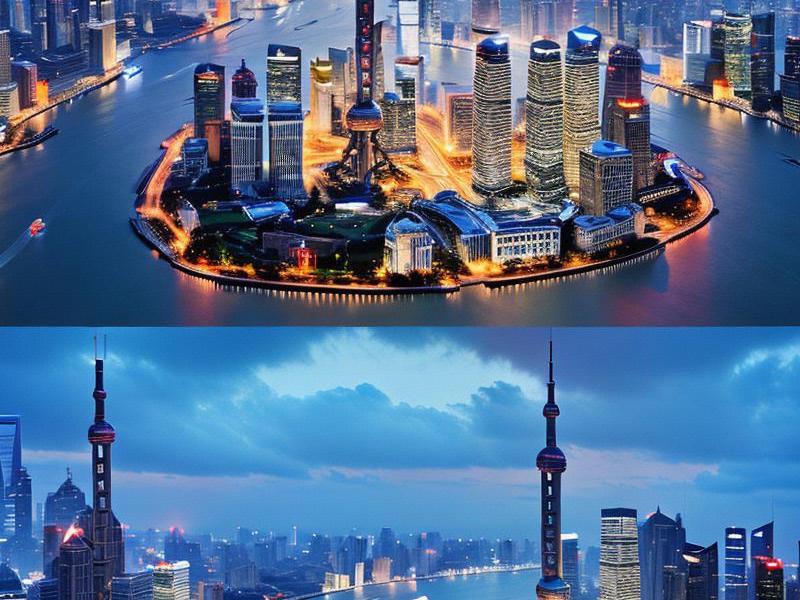This article delves into the innovative journey of Shanghai, exploring its transformation from a traditional port city to a global hub of technology, finance, and culture. It highlights the city's remarkable achievements in urban development, technological advancements, and its aspirations to become a world-class metropolis.

Shanghai, the vibrant heart of China, has long been a symbol of the country's rapid economic growth and modernization. Over the past few decades, this bustling metropolis has undergone a remarkable transformation, evolving from a historic port city into a global powerhouse. Today, Shanghai is not only a center for commerce and finance but also a beacon of innovation, cultural diversity, and urban sustainability.
The city's journey towards becoming a global city is nothing short of extraordinary. In the late 20th century, Shanghai was primarily known for its textile mills and shipyards. However, with the implementation of China's reform and opening-up policies in 1978, the city began to embrace economic liberalization and attract foreign investment. This marked the beginning of Shanghai's meteoric rise on the global stage.
One of the key factors behind Shanghai's success is its strategic location. Situated at the mouth of the Yangtze River, the city serves as a vital gateway for trade and commerce between China and the rest of the world. Its well-developed infrastructure, including one of the busiest ports in the world, has made it a preferred destination for multinational corporations seeking to establish a foothold in the Chinese market.
As Shanghai continued to grow, the government launched a series of ambitious urban development projects aimed at transforming the city into a world-class metropolis. The Bund, once a symbol of colonial Shanghai, has been revitalized into a stunning waterfront promenade, lined with luxury hotels, restaurants, and modern skyscrapers. Pudong, the eastern part of the city, has emerged as a financial and business hub, home to iconic landmarks such as the Oriental Pearl Tower, the Jin Mao Tower, and the Shanghai Tower, which is currently the tallest building in China.
上海龙凤阿拉后花园
Technology has played a pivotal role in Shanghai's transformation. The city has invested heavily in research and development, fostering a thriving tech ecosystem that attracts top talent from around the globe. Silicon Valley East, as some have dubbed it, is home to numerous startups, incubators, and accelerators, driving innovation in areas such as artificial intelligence, biotechnology, and fintech. Companies like Alibaba, Tencent, and ByteDance have established their presence in Shanghai, further cementing the city's status as a tech hub.
In addition to its economic achievements, Shanghai is also known for its rich cultural heritage and commitment to sustainability. The city has preserved its historical landmarks, such as the Yu Garden, the former French Concession, and the Nanjing Road pedestrian street, while also embracing modernity. The Shanghai Museum, the Art Gallery of Shanghai, and the Shanghai Grand Theatre are just a few examples of the cultural institutions that showcase the city's artistic and cultural vibrancy.
Shanghai's dedication to sustainability is evident in its efforts to combat air pollution, promote green energy, and develop eco-friendly infrastructure. The city has implemented strict regulations on industrial emissions and vehicle exhaust, leading to significant improvements in air quality. Solar panels and wind turbines can be seen across the city, reflecting its commitment to renewable energy. Additionally, Shanghai has developed a comprehensive public transportation network, including the world's first maglev train, which connects the city center to Pudong International Airport.
爱上海419
Despite its many achievements, Shanghai faces several challenges as it continues its journey towards becoming a global city. One of the primary concerns is the issue of housing affordability. Rapid urbanization and rising property prices have made it increasingly difficult for young professionals and low-income families to afford homes in the city. The government has introduced various measures to address this issue, such as increasing the supply of affordable housing and implementing stricter regulations on real estate speculation.
Another challenge is the need to balance economic growth with environmental sustainability. While Shanghai has made significant strides in reducing pollution and promoting green energy, there is still a long way to go. The city must continue to invest in sustainable technologies and practices to ensure that its economic development does not come at the expense of the environment.
Furthermore, Shanghai must navigate the complexities of globalization and maintain its competitive edge in the face of increasing competition from other global cities. To achieve this, the city must continue to foster innovation, attract top talent, and strengthen its international partnerships. By doing so, Shanghai can position itself as a leader in global affairs and a model for sustainable urban development.
上海龙凤419
The future of Shanghai looks bright, with the city poised to play an even more significant role on the global stage. As China continues to rise as a global superpower, Shanghai will undoubtedly be at the forefront of this transformation. The city's innovative spirit, commitment to sustainability, and rich cultural heritage make it a unique and dynamic place that continues to inspire and captivate people from all over the world.
In conclusion, Shanghai's journey from a traditional port city to a global hub of technology, finance, and culture is a testament to the power of determination and innovation. The city's remarkable achievements in urban development, technological advancements, and cultural preservation serve as a model for other cities around the world. As Shanghai continues to evolve and adapt to the challenges of the 21st century, it remains a beacon of hope and inspiration for millions of people who dream of a better future.